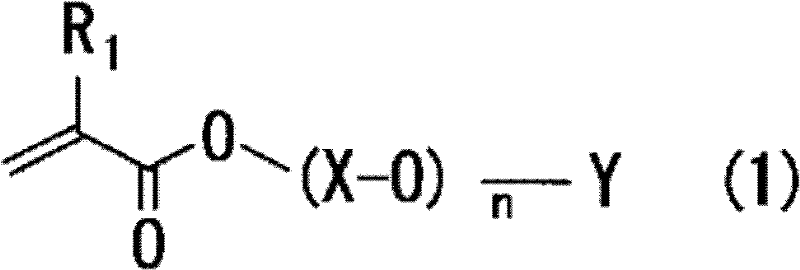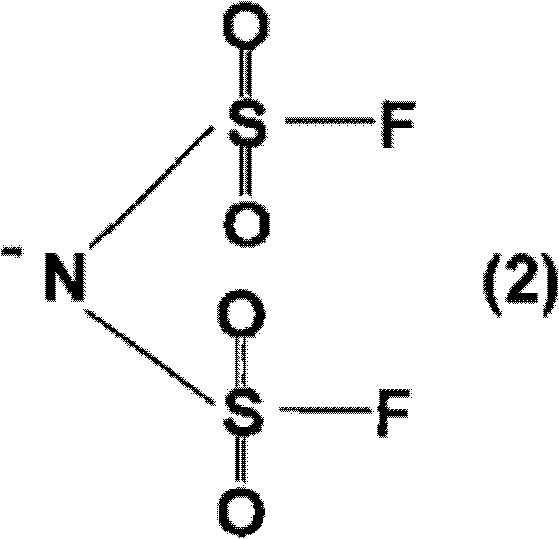Pressure-sensitive adhesive composition, pressure-sensitive adhesive, pressure-sensitive adhesive for optical member, and optical member with pressure-sensitive adhesive layer obtained using same
A technology of optical components and adhesives, applied in the direction of non-polymer adhesive additives, adhesive types, adhesive additives, etc., can solve problems such as electrostatic damage, abnormal display, and adhesion of peripheral circuit components, and achieve adhesion Excellent physical properties and antistatic performance, light leakage prevention, and excellent durability
- Summary
- Abstract
- Description
- Claims
- Application Information
AI Technical Summary
Problems solved by technology
Method used
Image
Examples
Embodiment 1~6、 comparative example 1~4
[0282] The adhesive composition constituting the adhesive forming material for optical parts was prepared by mixing the ingredients prepared and prepared as described above in the ratios shown in Table 3 and Table 4 below, and diluted it with methyl ethyl ketone ( Viscosity (1000-10000mPa·s (25°C))) to prepare an adhesive composition solution.
[0283] Then, the above-mentioned adhesive composition solution was coated on a polyester-based release sheet so that the thickness after drying was 25 μm, and after drying at 90° C. for 3 minutes, the formed adhesive composition layer was transferred to On a polyethylene terephthalate (PET) film (thickness 38μm), using an electrodeless lamp manufactured by Fusion Inc. [H bulb of LH6UV lamp] according to peak illuminance: 600mW / cm 2 , Cumulative exposure: 240mJ / cm 2 UV irradiation (120mJ / cm 2 × 2 times), after that, aging for 10 days under the conditions of 23° C. × 65% RH to obtain a PET film with an adhesive layer.
Embodiment 7~12、 comparative example 5、6
[0285] The adhesive composition constituting the adhesive forming material for optical parts was prepared by mixing the ingredients prepared and prepared as described above in the ratios shown in Table 3 and Table 4 below, and diluted it with methyl ethyl ketone ( Viscosity (1000-10000mPa·s (25°C))) to prepare an adhesive composition solution.
[0286] Then, the above-mentioned adhesive composition solution was coated on a polyester-based release sheet so that the thickness after drying was 25 μm, and after drying at 90° C. for 3 minutes, the formed adhesive composition layer was transferred to On a polyethylene terephthalate (PET) film (thickness 38 μm), thereafter, it was aged at 23° C.×65% RH for 10 days to obtain a PET film with an adhesive layer.
[0287] Using the PET film with an adhesive layer obtained in this way, the surface resistivity and the gel fraction were measured and evaluated by various methods shown below. Their results are summarized in Tables 3 and 4 bel...
PUM
| Property | Measurement | Unit |
|---|---|---|
| Film thickness | aaaaa | aaaaa |
| Average degree of saponification | aaaaa | aaaaa |
| Thickness | aaaaa | aaaaa |
Abstract
Description
Claims
Application Information
 Login to View More
Login to View More - R&D
- Intellectual Property
- Life Sciences
- Materials
- Tech Scout
- Unparalleled Data Quality
- Higher Quality Content
- 60% Fewer Hallucinations
Browse by: Latest US Patents, China's latest patents, Technical Efficacy Thesaurus, Application Domain, Technology Topic, Popular Technical Reports.
© 2025 PatSnap. All rights reserved.Legal|Privacy policy|Modern Slavery Act Transparency Statement|Sitemap|About US| Contact US: help@patsnap.com



